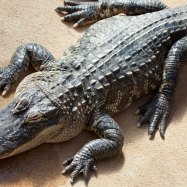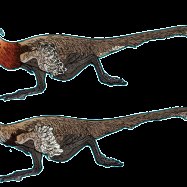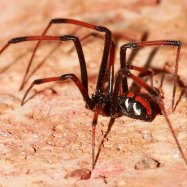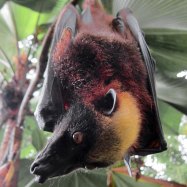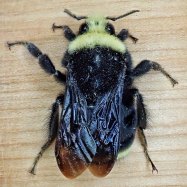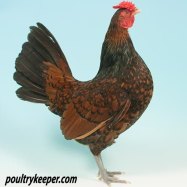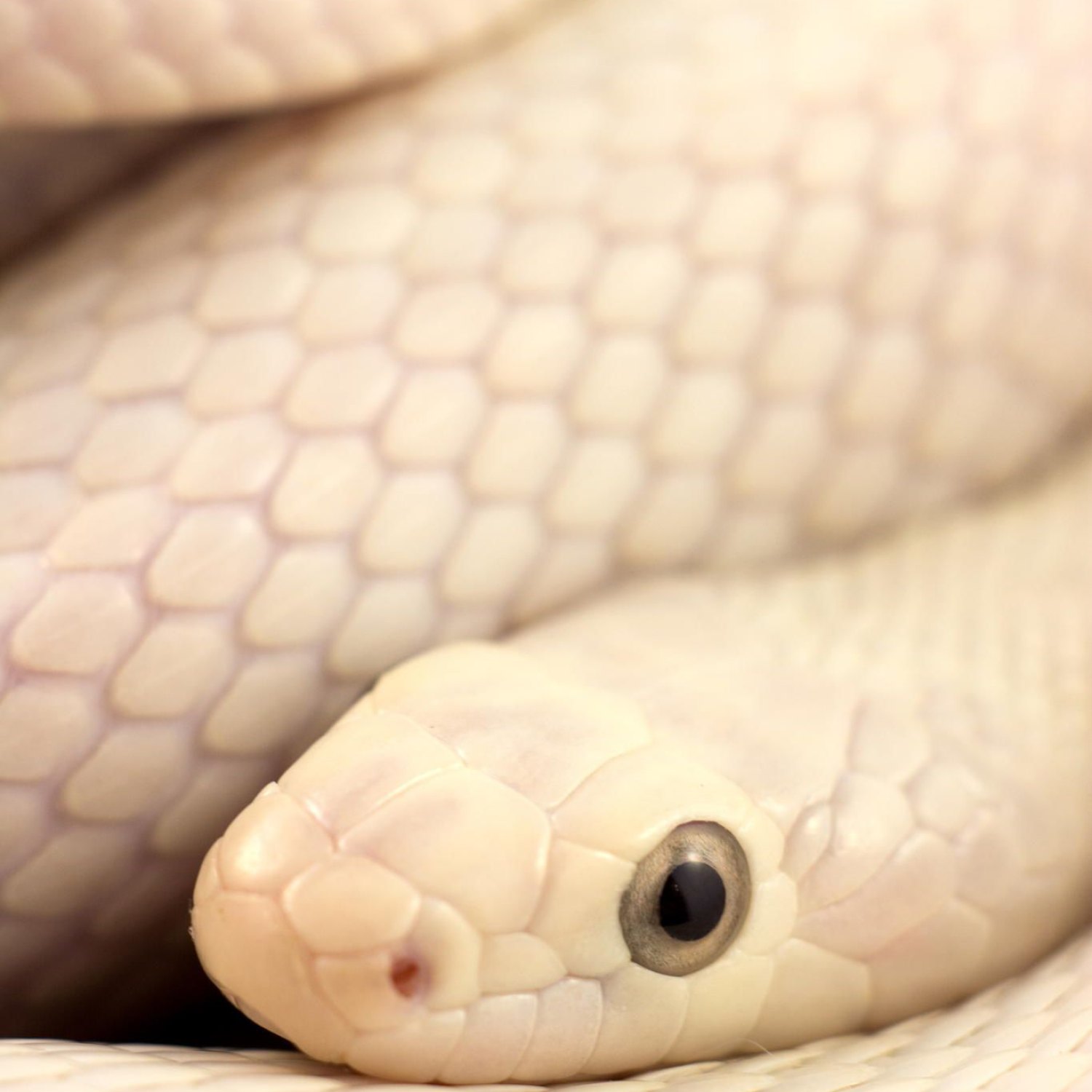
Texas Rat Snake
4 to 6 feet
The Texas Rat Snake is a non-venomous reptile found in the state of Texas. With a slender and elongated body, it can grow up to 6 feet in length. Belonging to the Colubridae family, these snakes are known for their agility and ability to climb. Keep an eye out for these fascinating creatures on your next trip to Texas! #TexasRatSnake #Colubridae #Reptiles #TexasWildlife
Animal Details Summary:
Common Name: Texas Rat Snake
Kingdom: Animalia
Habitat: Woodlands, grasslands, swamps, rocky hillsides
The Fascinating World of the Texas Rat Snake
When it comes to the animal kingdom, there are few creatures that spark our curiosity and fascination as much as snakes. These slithering creatures have been the subject of myths, legends, and fear for thousands of years. And among the many species of snakes, the Texas Rat Snake stands out for its unique features and characteristics.In this article, we will take a closer look at this non-venomous reptile and explore its habitat, behavior, and more Texas Rat Snake. So let's dive into the fascinating world of the Texas Rat Snake and discover what makes it such a remarkable species.
An Introduction to the Texas Rat Snake
The Texas Rat Snake, scientifically known as Pantherophis obsoletus, is a member of the Colubridae family. This species is commonly found in the south-central United States, with its origin and primary location being in the state of Texas. Hence, its name, Texas Rat Snake.These snakes have a long and slender body shape, which can range from 4 to 6 feet in length, making them one of the largest snake species in Texas. They are also known for their striking coloration, which can vary from brown to black, with yellow and white patterns.
Habitat and Geographic Distribution
One of the most interesting aspects of the Texas Rat Snake is its habitat and geographic distribution. These snakes are found in a variety of environments, including woodlands, grasslands, swamps, and rocky hillsides. This versatility makes them well-adapted to survive in different conditions Tennessee Walking Horse.In terms of their geographic distribution, these snakes are mainly found in the south-central United States. However, they have also been spotted in some areas of Oklahoma, Louisiana, and Arkansas. This makes the Texas Rat Snake a significant part of the ecosystem in this region.
Feeding Method and Behavior
The Texas Rat Snake is a carnivorous species, which means that they feed on other animals. These snakes have a diverse diet and can consume a variety of prey, including birds, eggs, rodents, and other small reptiles. Their hunting methods are quite impressive, as they use their powerful jaws and constricting ability to capture their prey.One of the unique behaviors of the Texas Rat Snake is that it is diurnal, meaning that it is active during the day. This is a stark contrast to other snake species that are mainly nocturnal. This behavior allows them to bask in the sun and regulate their body temperature, which is essential for their metabolism and digestion.
The Beauty of their Coloration and Body Shape
The Texas Rat Snake is known for its beautiful and unique coloration. These snakes have a base color of either brown or black, with striking yellow and white patterns on their body. These patterns often resemble a ladder or a net, with a wide range of variations, making each snake unique in its appearance.Their body shape is also noteworthy, as they have a long, slender body with a relatively small head in proportion to their body. This body shape allows them to move swiftly through different terrains and hide comfortably in small crevices.
The Importance of the Texas Rat Snake
Like all other living creatures, the Texas Rat Snake plays a crucial role in maintaining the balance of the ecosystem. As predators, they control the population of smaller animals, helping to prevent overpopulation.Moreover, these snakes also serve as prey to larger animals, such as birds of prey and larger snakes. This interdependence makes the Texas Rat Snake an essential part of the food chain in their habitat.
The Threats to their Population
Unfortunately, like many other species, the Texas Rat Snake is facing some threats to its population. One of the major factors is habitat loss due to human activities, such as urbanization and deforestation. This affects their natural food sources and shelter, making it challenging for these snakes to survive.The illegal pet trade is another significant threat to their population. Many people find these snakes fascinating and may attempt to capture and keep them as pets. However, this practice is harmful to the species, as it disrupts their natural habitat and can result in their death.
Conservation Efforts
Thankfully, there are efforts in place to protect and conserve the Texas Rat Snake. Measures have been taken to preserve their habitat and raise awareness about the importance of these snakes in the ecosystem.Moreover, laws have been put in place to regulate the illegal pet trade and prevent the capture and keeping of these snakes as pets. This is an essential step in ensuring the survival of the species and maintaining a healthy balance in their natural habitat.
In Conclusion
The Texas Rat Snake is an enchanting and unique species of snake that plays a vital role in the ecosystem. Their versatile habitat, diverse diet, and striking coloration make them a standout among other snake species. However, their population is threatened due to human activities, and it is our responsibility to preserve and protect these fascinating creatures.By learning more about the Texas Rat Snake and spreading awareness about their importance, we can help ensure their survival for generations to come. So let us appreciate the beauty and significance of this species and work towards their conservation.

Texas Rat Snake
Animal Details Texas Rat Snake - Scientific Name: Pantherophis obsoletus
- Category: Animals T
- Scientific Name: Pantherophis obsoletus
- Common Name: Texas Rat Snake
- Kingdom: Animalia
- Phylum: Chordata
- Class: Reptilia
- Order: Squamata
- Family: Colubridae
- Habitat: Woodlands, grasslands, swamps, rocky hillsides
- Feeding Method: Carnivorous
- Geographical Distribution: South-central United States
- Country of Origin: United States
- Location: Texas
- Animal Coloration: Brown, black, yellow, and white
- Body Shape: Slender and elongated
- Length: 4 to 6 feet
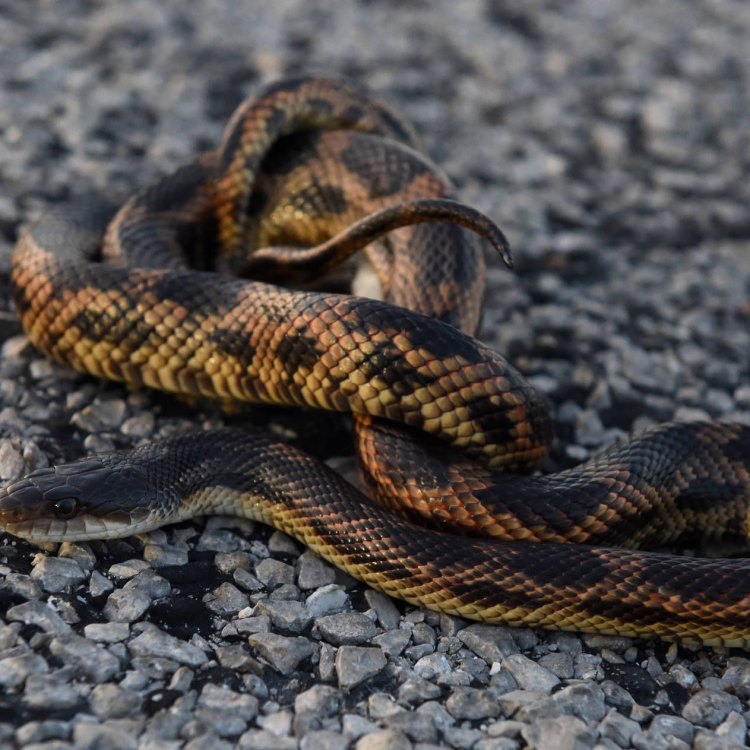
Texas Rat Snake
- Adult Size: 5 to 7 feet
- Average Lifespan: 15 to 20 years
- Reproduction: Oviparous
- Reproductive Behavior: Mating occurs in spring
- Sound or Call: Hissing sound when threatened
- Migration Pattern: Non-migratory
- Social Groups: Solitary
- Behavior: Nocturnal
- Threats: Habitat loss, road mortality, illegal collection
- Conservation Status: Least Concern
- Impact on Ecosystem: Control of rodent populations
- Human Use: Pet trade
- Distinctive Features: Distinct yellowish-white chin and throat
- Interesting Facts: Texas Rat Snakes are excellent climbers
- Predator: Birds of prey, mammals, other snakes
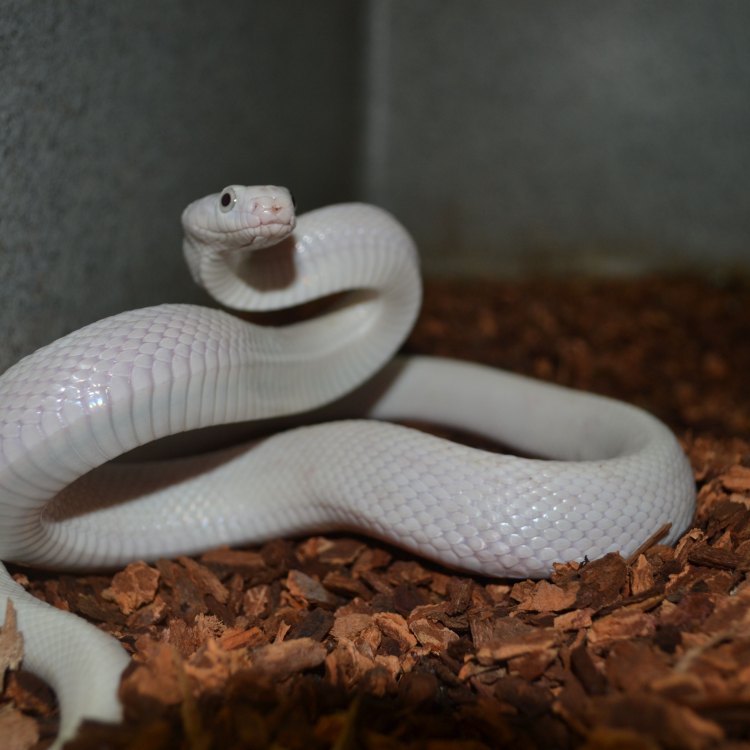
Pantherophis obsoletus
The Fascinating World of the Texas Rat Snake
When you hear the word 'snake', what comes to mind? For many people, it may be fear, disgust, or a shiver down their spine. However, there is one species of snake that may change your perception - the Texas Rat Snake. These creatures are not only unique, but their presence is essential for the balance of ecosystems and has been the subject of fascination for many researchers and enthusiasts. In this article, we will dive into the world of the Texas Rat Snake, exploring its physical features, behaviors, impact on its environment, and its relationship with humans PeaceOfAnimals.Com.Physical Characteristics
The Texas Rat Snake, also known as the black rat snake, is a non-venomous species found in the southern United States. They are usually between 5 to 7 feet in length, making them one of the largest snakes in their native regions. However, some individuals can grow up to an impressive 8 feet in length. They have a slender body with smooth scales, and their coloration varies from light gray to dark brown, often with black markings or stripes running down their back.One of the most distinctive features of the Texas Rat Snake is its yellowish-white chin and throat, which gives it a unique appearance. This feature is particularly pronounced in males, making it easier to identify their gender. These snakes have excellent vision, thanks to their large, round eyes, which are designed to hunt for prey at night. Their strong, curved teeth are used to catch and hold onto their food, and their muscular bodies allow them to climb trees and other structures effortlessly.
Reproduction and Behavior
Texas Rat Snakes are oviparous, which means they lay eggs instead of giving birth to live young Tiger Swallowtail Caterpillar. Mating typically occurs in the spring, with females laying anywhere from 10 to 20 eggs in a clutch. Unlike most snakes, the female will coil around her eggs, staying with them until they hatch, showing a unique level of parental care.These snakes are solitary creatures, and they are mostly active at night, making them nocturnal. During the day, they can often be found basking in the sun to regulate their body temperature. When threatened, they will emit a loud hissing sound, a warning to potential predators. However, if that doesn't work, they are also known to mimic the behavior of venomous snakes, such as vibrating their tail, to intimidate their enemies.
Migratory Patterns and Social Groups
Texas Rat Snakes are non-migratory, meaning they do not travel long distances from their home range. This area can vary in size, depending on the snake's size, habitat availability, and population density. They are mostly solitary creatures, and the only time they interact with others of their kind is during mating season. After the female gives birth, the young will disperse, leading solitary lives like their parents.Threats to Survival
Like most creatures in the wild, Texas Rat Snakes face significant threats to their survival. The main threat to their population is habitat loss, as road constructions, urban expansion, and deforestation reduce the availability of their natural habitats. Another common danger is road mortality, where snakes are often killed by cars while crossing roads to find food.However, the most significant threat to their survival is illegal collection for the pet trade. These snakes have a docile nature and are relatively easy to care for, making them popular among reptile enthusiasts. Unfortunately, this has led to a decline in their population in some regions, and they are even listed as a species of concern in some states.
Conservation Status and Impact on Ecosystems
Despite these threats, the Texas Rat Snake is categorized as 'Least Concern' on the IUCN Red List, thanks to their wide distribution and large population. However, it is essential to monitor their numbers and take steps to protect their habitats to ensure their continued survival.One of the key roles of the Texas Rat Snake in its ecosystem is controlling rodent populations. These snakes are excellent hunters and will often feed on rodents, such as rats and mice, which can cause significant damage to crops and spread diseases. They also serve as prey for larger predators, such as birds of prey, mammals, and other snakes, making them an essential part of the food chain.
Human Use and Interesting Facts
Due to their gentle nature, Texas Rat Snakes are often kept as pets. However, it is essential to ensure that you are getting your pet from a reputable source and that you have a proper understanding of their needs and behavior. As mentioned earlier, illegal collection for the pet trade is a significant threat to these snakes' populations, so it is crucial to support responsible ownership.One of the most interesting facts about Texas Rat Snakes is their climbing abilities. These snakes are excellent climbers and can scale trees and other structures with ease, making them highly adaptable to their surroundings. They will often use this skill to hunt, bask in the sun, or escape from danger.
In addition to their climbing abilities, Texas Rat Snakes also have remarkable strength. According to researchers, these snakes can lift up to six times their body weight, making them one of the strongest snakes in the world. This strength allows them to overpower their prey, which includes birds, eggs, and small mammals.
In Conclusion
The Texas Rat Snake may not be the most popular or well-known snake, but it is undoubtedly a fascinating and essential species. Their unique physical features, behaviors, and impact on their environment make them a critical part of their ecosystems. However, they face significant threats to their survival, and it is our responsibility to protect and conserve these creatures for future generations to appreciate and admire.So, the next time you come across a Texas Rat Snake, instead of feeling fear or disgust, take a moment to admire its beauty, strength, and the crucial role it plays in the balance of nature.
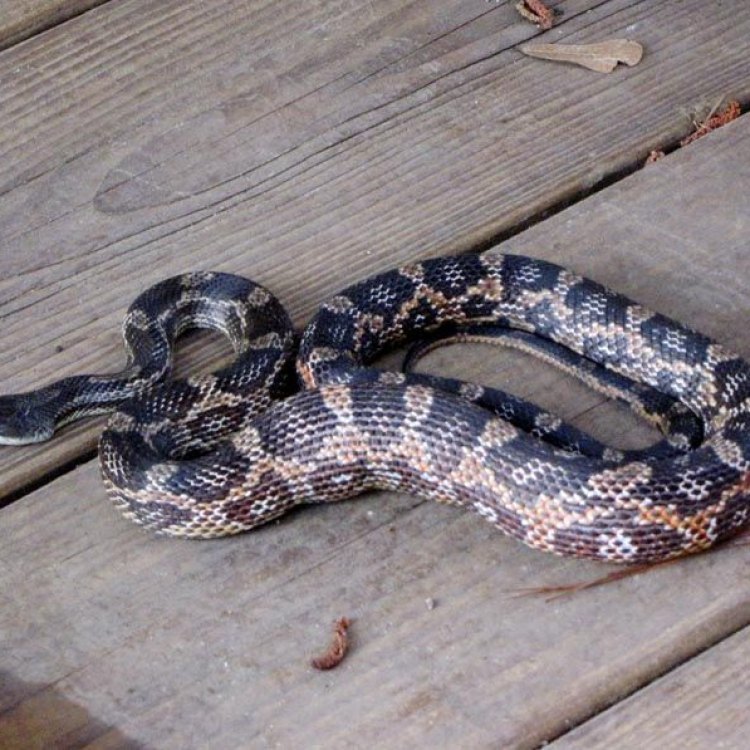
The Fascinating World of the Texas Rat Snake
Disclaimer: The content provided is for informational purposes only. We cannot guarantee the accuracy of the information on this page 100%. All information provided here may change without prior notice.



